Anna is a year 3 Horticulture with Plantsmanship student here at RBGE and at Scotland’s Rural College. She spent the summer doing various work placements. Read on to find out about her experience working with orchids in Sweden.
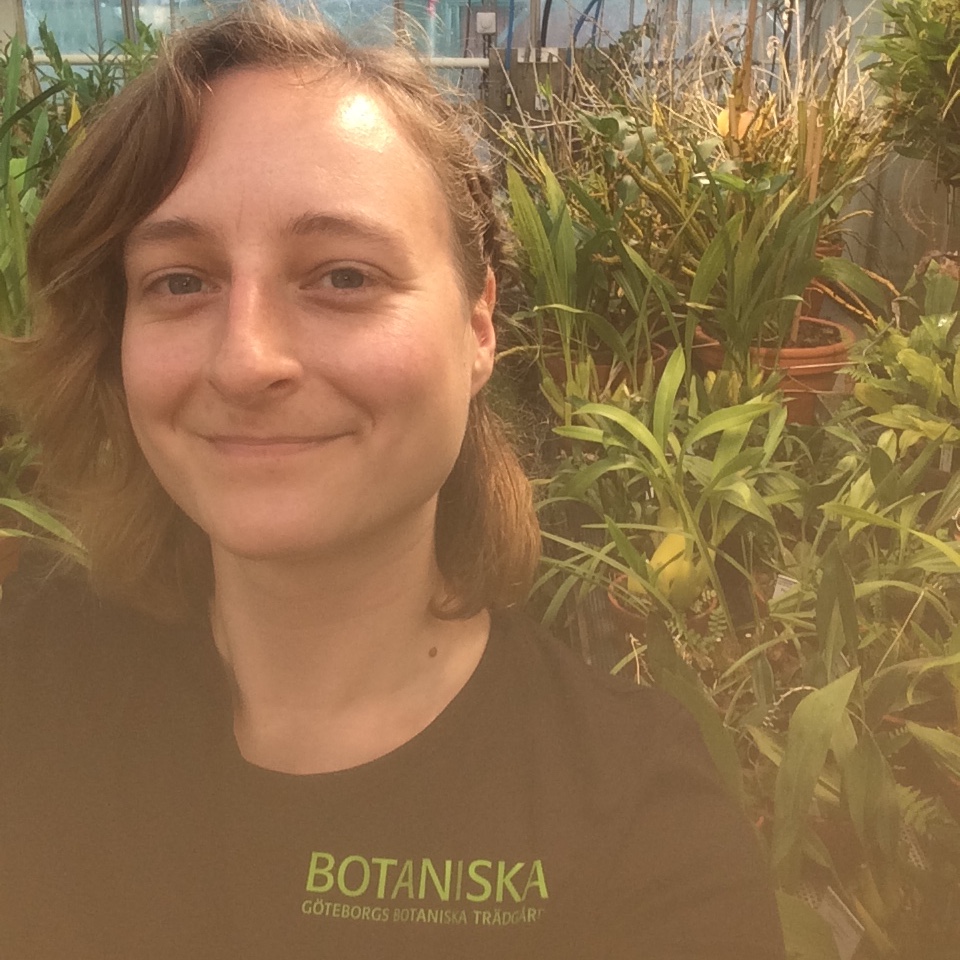
‘Why orchids?’ is one of the many questions I’ve been answering for the past two weeks. It’s the first Monday of September and I am about to return to Edinburgh after a placement at the Botanic Garden in Gothenburg, Sweden. I travelled here during the summer holidays to learn all about orchid care and cultivation – and, I must admit, to attend my sister’s wedding (it all went splendidly, thank you for asking!). I had emailed the Garden out of the blue to check whether they would take me on for a placement and due to just the right circumstances I was accepted. It has been a fantastic experience from beginning to end!
On the very first morning, I was feeling a little nervous. A new place, new people, and my Swedish was feeling very rusty (I used to live in Sweden). Of course, I needn’t worry! I was met at the front gate by the orchid house supervisor Åsa who wore a big smile, welcoming me to the Gardens. I received some keys, a tour and was lent some work clothes with the Botanic’s logo on them. I joined in the regular Monday check-in meeting and was introduced to the rest of the glasshouse team. Everywhere I went, other staff would say good morning and introduce themselves, curious who I was and where I was from. All of this gave an overwhelming sense of welcome and of belonging on a beautiful, sunny summer’s day and my spirits were high.
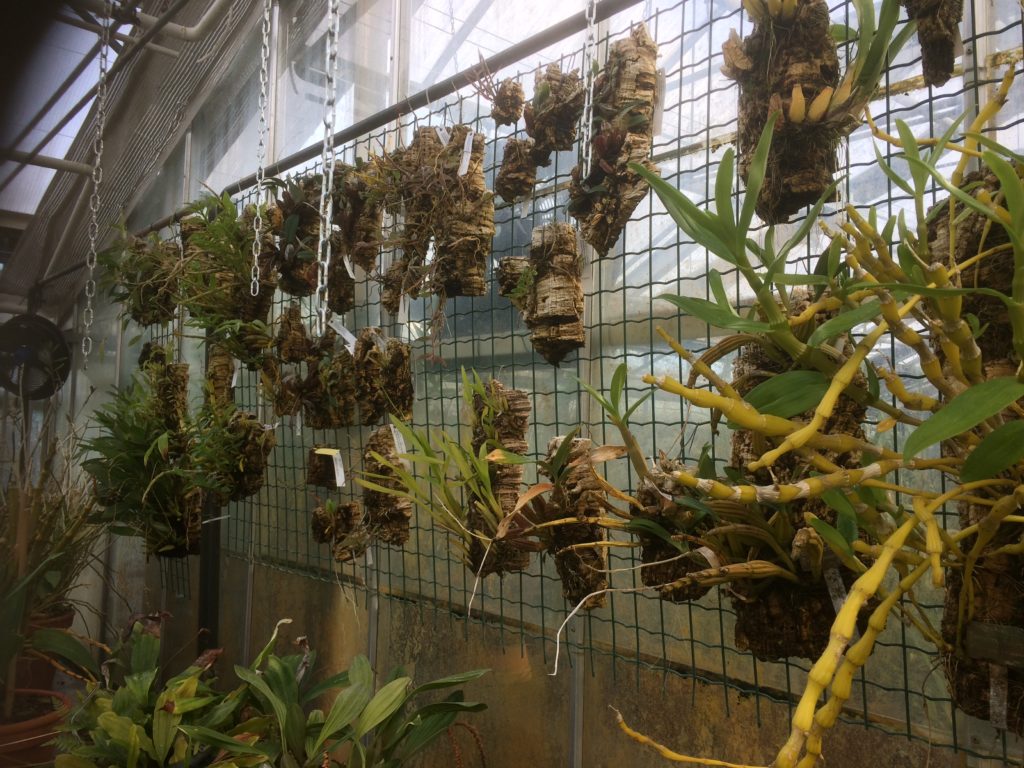
And then there were the orchids! Several hundred species filling three glasshouses: tall, scraggly orchids reaching for the ceiling; tiny orchids with weensy flowers hanging from the walls; vining orchids snaking their way across chains and rafters; orchids in baskets, in pots, on bark and in beds. Orchids galore! It was beautiful – and a little intimidating. Because my answer to the ‘Why orchids?’ question is perhaps a little surprising. Out of all the various kinds of plants I have grown in my life, orchids have always given me trouble. And I had requested a placement in this department to change this.
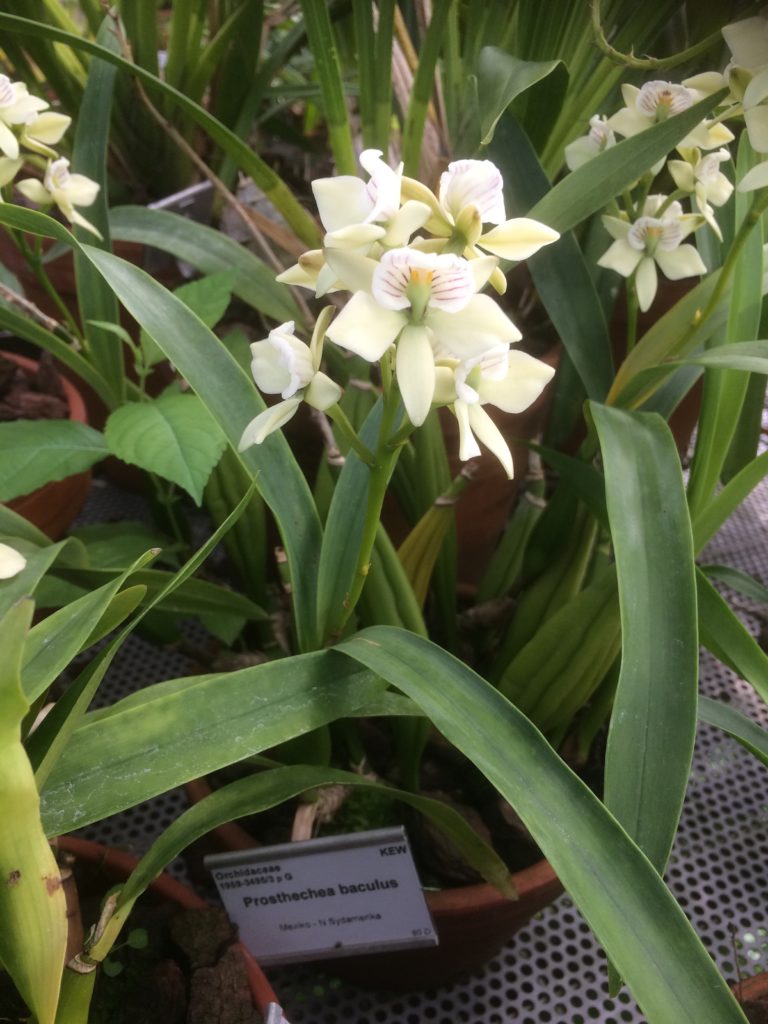
Well – to start changing this. Orchidaceae (the family to which orchids belong) is one of the two largest families of flowering plants, which means that there are many genera and species of orchids. Many of these are also very specialised and overall, this means that to know what a specific orchid needs you need to know the conditions in which it grows in the wild. To aid cultivation of large amounts of orchids, they are usually grouped according to their climatic requirements. At Gothenburg Botanics these were represented by three orchid houses with different temperature and humidity settings. More importantly, Åsa and Daniella (the other member of the amazing orchid team) volunteered lots of information and were very happy to answer any questions. And I had many, many questions!
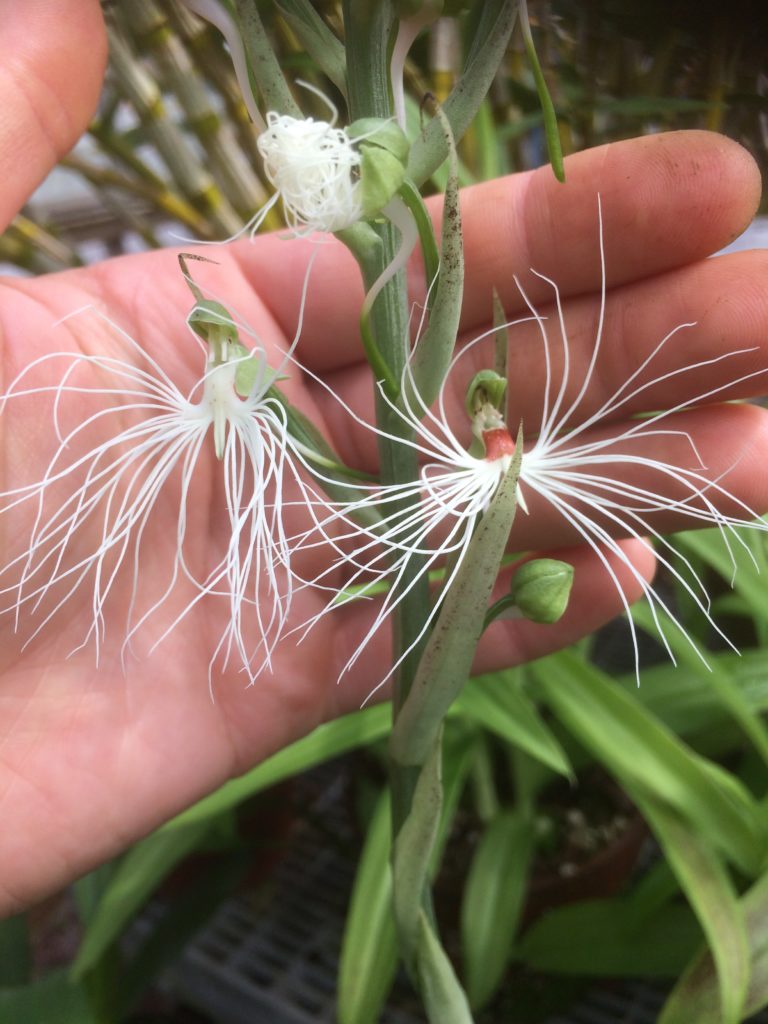
Some of the questions were about orchid cultivation, of course. How to tell apart a live root from a dead one (fleshy/not), are you meant to cut off spent flower stalks (sometimes), and what pests and diseases affect orchids (scale, mealy bugs, virus – and more). I got to try my hand at mounting orchids onto pieces of bark and I had questions about attaching a particularly twisty orchid (which way is up???), or about the bark that was used for the mounting (always cork?). I was instructed in how to tell if an orchid needs water (they don’t wilt as other plants do) and got to press the big green button to start the morning mist programme in the Dendrobium house (so satisfying!). I was also curious about the wee labels near some groups of orchids which turned out to indicate whether they required reduced watering during the winter, as many orchids undergo some sort of dormancy.
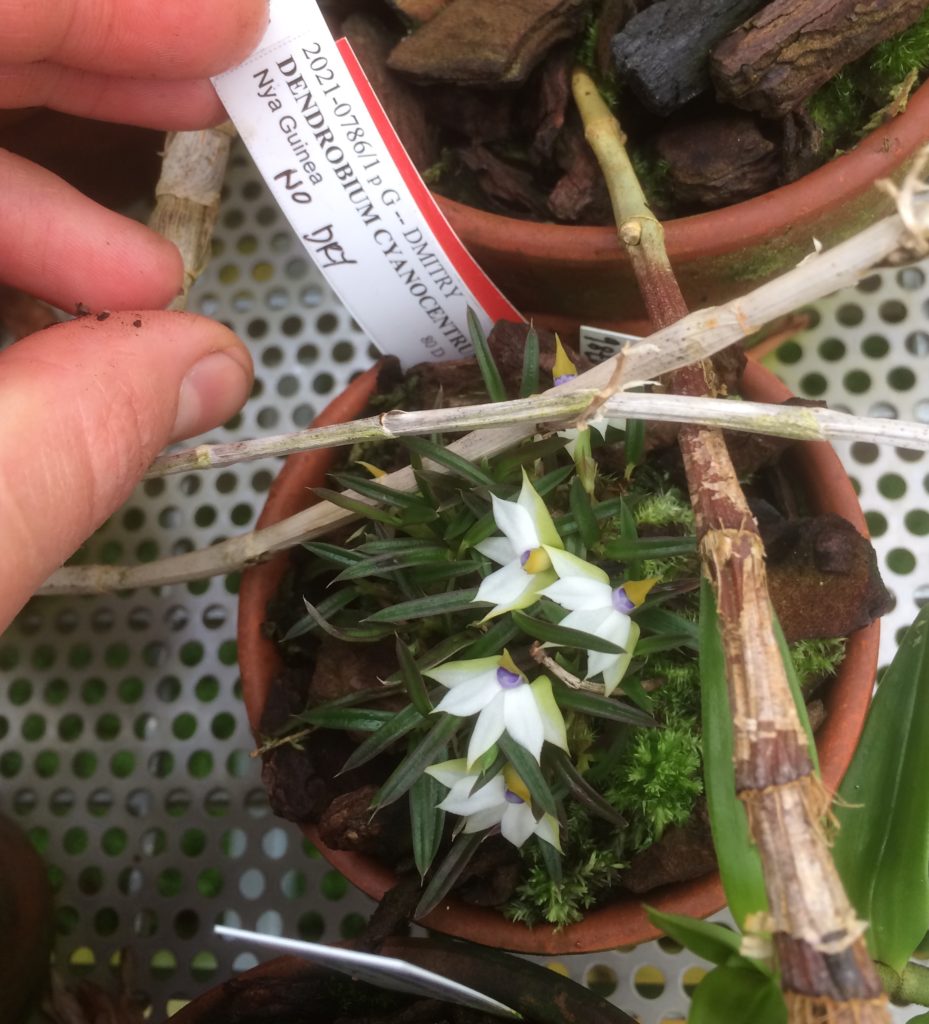
Other questions were about the way things were done in the Gardens, specifically where they differed from the Botanics in Edinburgh. I was curious about biosecurity and whether there is much vandalism with the Gardens being open 24/7 (there is not). I wondered about how the team arrived at their particular orchid substrate mix (trial and error) and who curated the collections (the botanists). I was also very interested in learning more about the glasshouse renovation project since Edinburgh Botanics is also undergoing this process. I got to see plans for the new houses and hear all about the visitor journey and improved plant cultivation facilities. And whenever staff went to a meeting related to the project, I took the opportunity to do a spot of weeding – probably the only task which did not generate a single question!
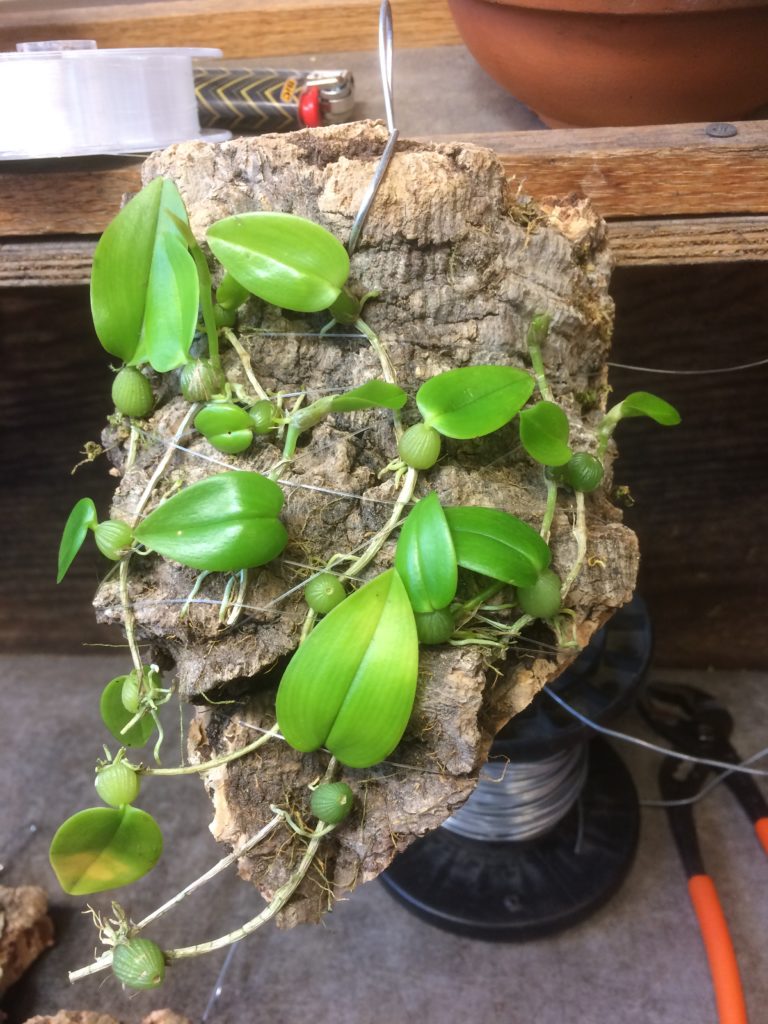
By the end of the placement I felt I had learned so much about orchids, about their cultivation and about the Gardens. I had the opportunity to perform a multitude of tasks of varying degrees of complexity, many of which I had never done before and most of which I don’t have space to mention here. I had met fantastic people with interesting backgrounds who welcomed me and shared their expertise with me. I had spent an amazing two weeks surrounded by orchids and – I forgot to mention! – singing tropical frogs which made me feel like I was in the jungle. Back at home, I am feeling more grateful than ever for my wonderful summer and will forever be giving the advice to just reach out to the places at which you are interested in working. And just be clear, I am also thinking of what orchids to buy to grow at home. I have a feeling that in the future, the question “Why orchids?” will be prompted by a house full of these fascinating plants.
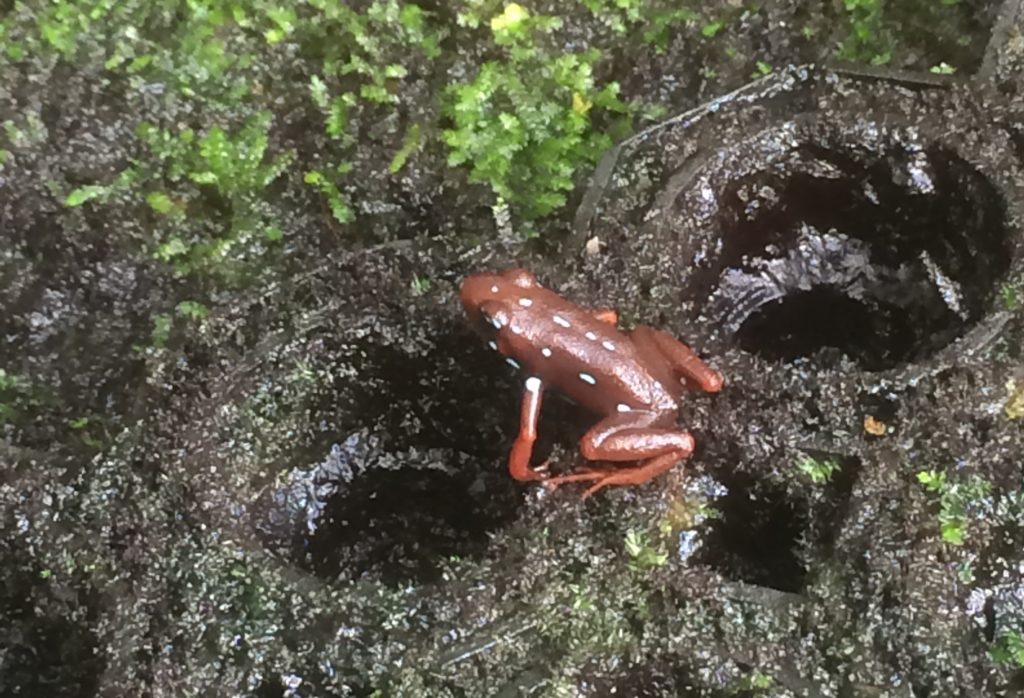
Many thanks to the tropics team at Göteborgs Botaniska Trädgård and in particular to Åsa and Daniella for their support and enthusiasm during my placement. Thanks also go to Edinburgh Botanic Gardens and the William Steel Trust for covering some of the associated costs.
